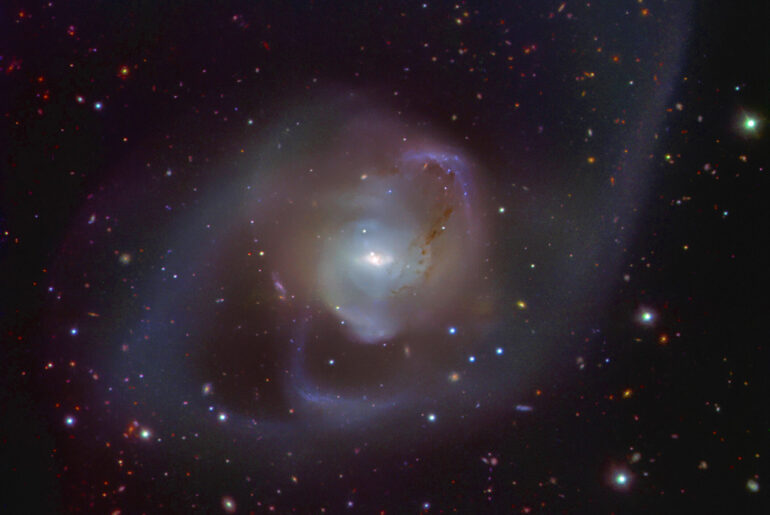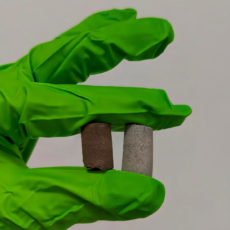
European Southern Observatory astronomers used the Very Large Telescope (VLT) to capture a dazzling cosmic collision, galaxy NGC 7727. This massive entity was created from the merger of two galaxies, an event that started around a billion years ago. If you look closer at its center, you’ll see the closest pair of supermassive black holes ever found.
In the zoomed in image above, we get a closer look at the tangled trails created as the two galaxies merged, which stripped stars and dust from each other to create the spectacular long arms of NGC 7727. The two bright points at the center of the galaxy depict the original two galactic cores, each hosting a supermassive black hole, located about 89 million light-years away from Earth in the constellation of Aquarius. They are expected to merge into a mega massive black hole within 250 million years. Despite being much older than the ESO’s Very Large Telescope (VLT), Hubble still captures amazing images, like this cosmic necklace.
- INSPIRE CURIOSITY – The NASA Lunar Telescope allows your child to see the moon in incredible detail; the perfect gift for girls and boys interested...
- HIGH-QUALITY OPTICAL GLASS AND FINDER SCOPE – This easy-to-use telescope comes with a finder scope, low power, and high-power eyepieces; when used...
- TABLETOP TRIPOD & SMOOTH MOUNT SYSTEM – Use the included tripod to steady your Lunar Telescope for optimal viewing, with a smooth mounting system...

The search for similarly hidden supermassive black hole pairs is expected to make a great leap forward with ESO’s upcoming Extremely Large Telescope (ELT), set to start operating later this decade in Chile’s Atacama Desert. With the ELT, we can expect many more of these discoveries at the centres of galaxies,” said the ESO.






